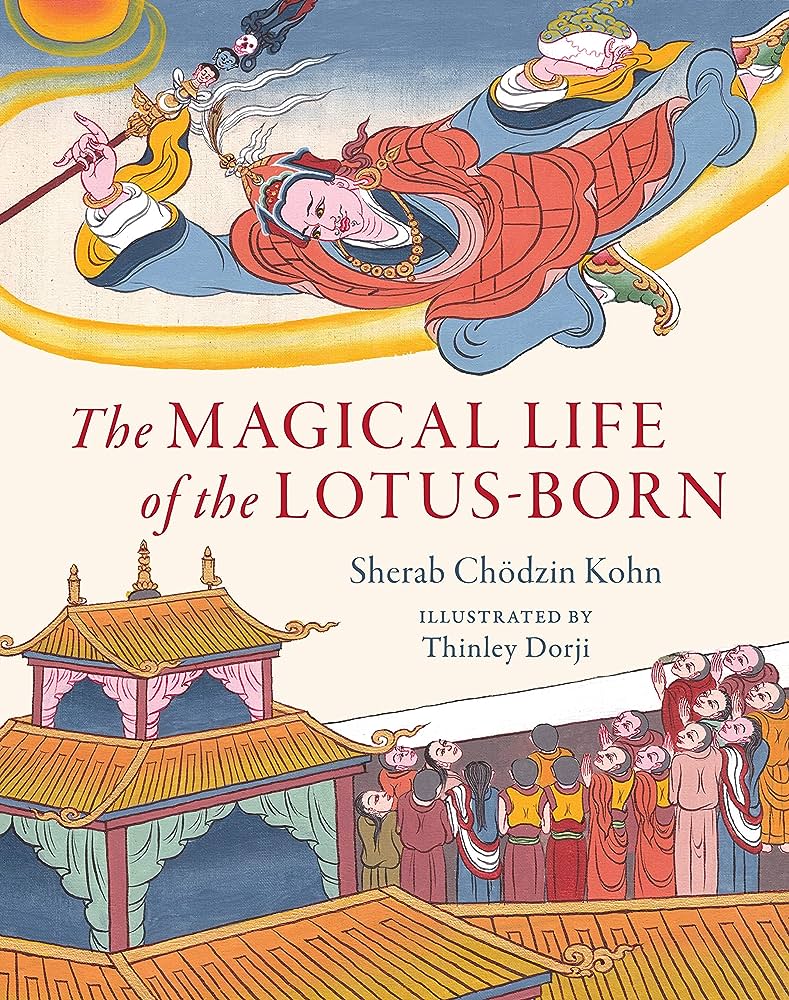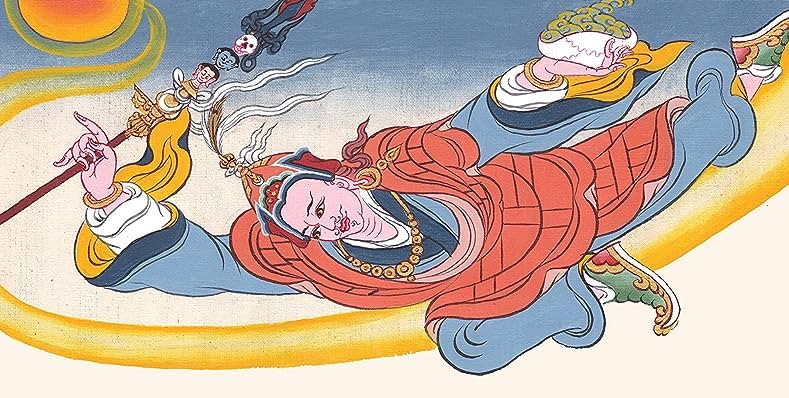It has been a long time coming. Written by Sherab Chödzin Kohn and illustrated by Thinley Dorji, who is a traditionally trained, Paro-based thangka painter, The Magical Life of the Lotus-Born (2023) from Shambhala is one of the first English-language books on Padmasambhava. Padmasambhava, of course, is the “siddha prime” of the Vajrayana world, whose power and legacy has remained unsurpassed in the Himalayas. It is intended for children aged 8–12, and the storybook will also appeal to schoolteachers, parents, and caregivers.
This might be a children’s book, but behind it is a stellar cast. Sherab Chödzin Kohn’s master was Chögyam Trungpa Rinpoche and taught Buddhism and meditation for over three decades. He also edited a number of the books of his teacher, and was co-editor of the bestselling anthology The Buddha and His Teachings. He has also translated several texts, including an acclaimed version of the famous Siddhartha by Hermann Hesse. The Magical Life of the Lotus-Born also has an afterword by Bhutanese master Dzongsar Khyentse Rinpoche.

The feats of the lotus-born are certainly enough to capture children’s attention: his arrival into Tibet reads very much like a protagonist’s call to adventure as outlined in the hero’s journey. He is summoned to Tibet by the sagely Santaraksita, who is an Indian monk and religious courtier to the Tibetan emperor Trison Detsen. Despite his proximity to the royal court and influence among the learned Buddhist classes, Santaraksita is helpless to stop a demoness (sinmo) at the new Samye Monastery, whose malevolent influence makes the construction site collapse again and again. Padmasambhava’s mystical specialty enables him to subdue the demoness by pinning her down with powerful magic and converting her into a protector of the Dharma. Subsequently, he travels around Tibet, performing miracles, defeating and converting yet more demons to the Dharma, and leaves behind a slew of terma for future terton to discover.
The eminent José Cabezón has written an excellent, figuratively graphic and R-rated piece on the origins of Padmasambhava’s magical assault on Tibet’s supernatural landscape, as contrasted with the Buddhist taming of the realm of Gilgit. It is absolutely fascinating how the sinmo myth could be read as an allegory of the Yarlung empire’s expansion, “with a stable center at Lhasa (the sinmo’s heart) and a periphery (her limbs) that, marked by revolts, needed to be constantly controlled. . . . The Tibetan sinmo tale valorizes a trans-local religion, Buddhism, as a way of controlling Tibetan barbarity, symbolized by the demoness.” (Wisdom)
Not exactly something for Nickelodeon. But how many contemporary fairy tales, especially at Disney, have been retold to (rightly) excite, inspire, and amuse children? I would love to see a kids’ version – perhaps a book series or well-made cartoon – of King Gesar of Ling, that great warrior hero that sits among the pantheon of Eurasian kingly archetypes celebrated throughout Central Asia, parts of South Asia, and central Tibet. Padmasambhava and King Gesar: now that is a formidable team-up.
See more
The Magical Life of the Lotus-Born (Shambhala)
The Revenge of the Demoness (Wisdom)
Related features from BDG
Book Review: The Taming of the Demons: From the Epic of Gesar of Ling


